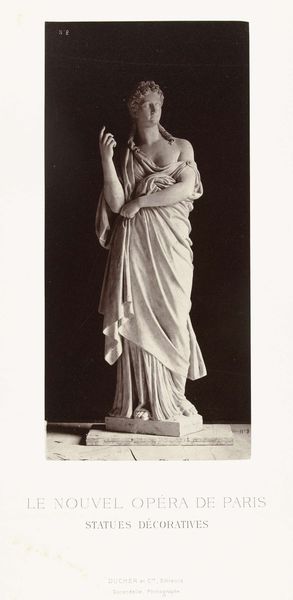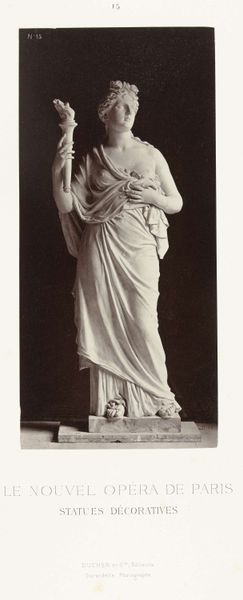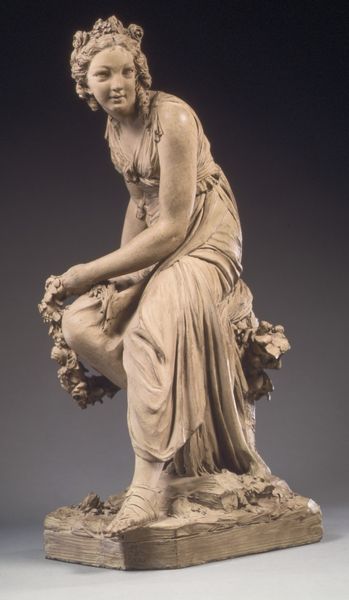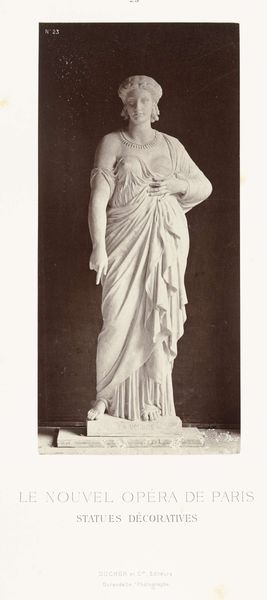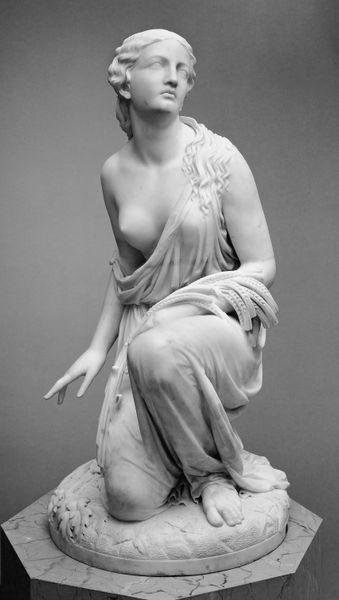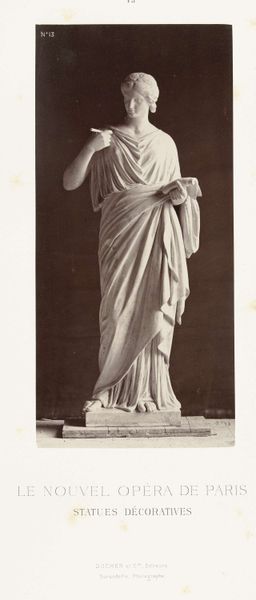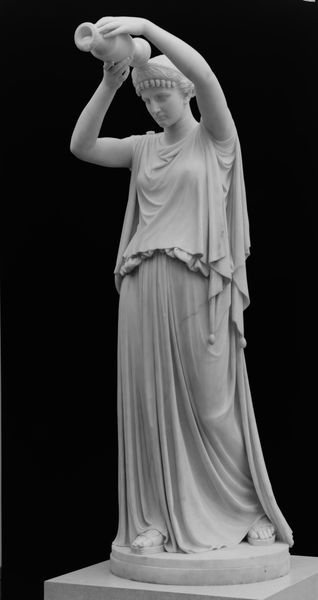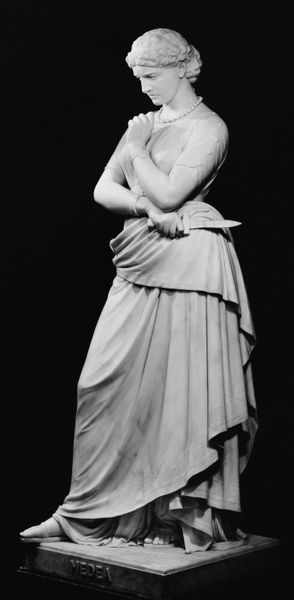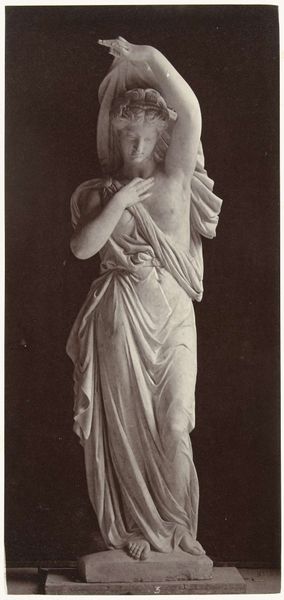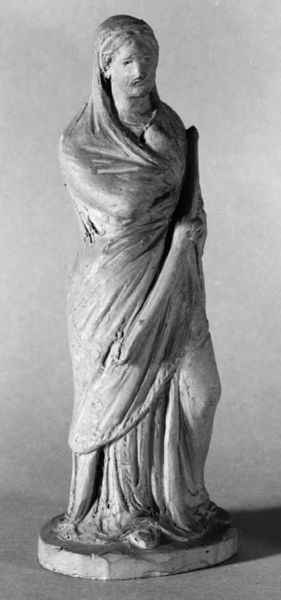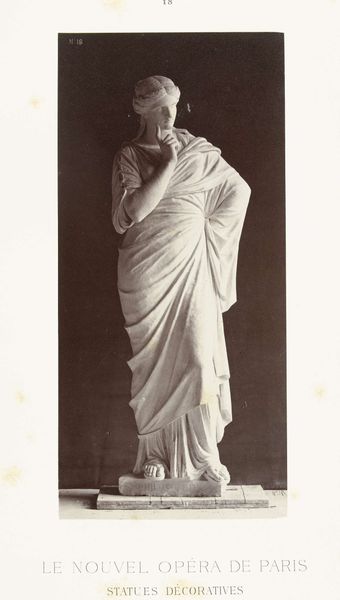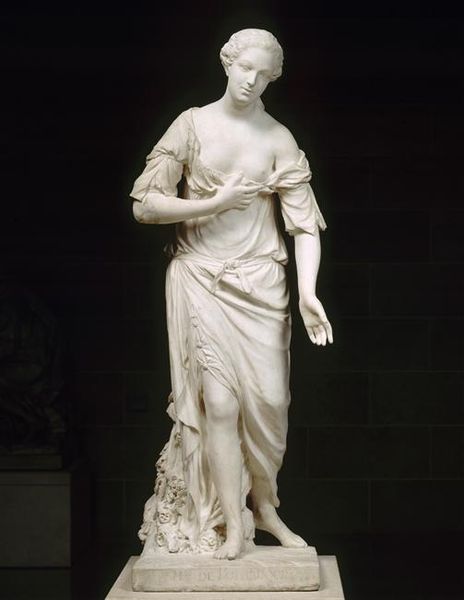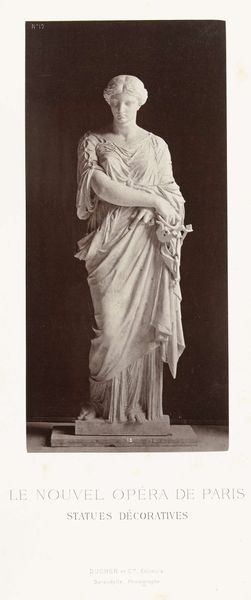
sculpture, marble
#
portrait
#
neoclacissism
#
sculpture
#
figuration
#
sculpture
#
academic-art
#
decorative-art
#
marble
#
realism
Dimensions: H. 75 in. (190.5 cm.) Base, ca. 26 x 22 in. (66 x 55.9 cm.)
Copyright: Public Domain
Curator: Rafaello Monti's "The Veiled Woman," sculpted in 1854, invites us into a world where classical ideals meet the decorative arts. Made from marble, the artwork presents a life-sized female figure draped in what appears to be a delicate veil. Editor: The first word that comes to mind is ethereal. The way the light interacts with the marble makes the veil seem almost weightless, lending the figure an almost spiritual quality. It’s interesting how concealment becomes a focal point rather than something hidden. Curator: Precisely! Consider how veiling practices have been employed throughout history and across cultures. We must analyze its multifaceted implications relating to notions of modesty, class distinctions, or the representation of women within specific social strata during the mid-19th century in Europe. What narratives of agency might the artwork both suggest and repress? Editor: Absolutely, and from my perspective as an iconographer, I'm drawn to the veil itself as a potent symbol. Veils frequently appear in mythology, spirituality, and of course, art history. This sculpture creates a play on what is hidden and revealed, invoking both intimacy and distance. The figure's face is obscured, which evokes mystery while the form itself emphasizes beauty through elegant curves and graceful posture. I wonder about the symbolism of roses crowning her head and her pose with crossed arms over her breast. Curator: Those formal choices are key, yes. There's the Neoclassical reverence for line and form merging with what could be seen as a subtle commentary on gender and representation during a period of rapid industrialization and social upheaval. It’s almost as if Monti used the very constraints placed upon women as an opportunity for aesthetic and possibly social commentary. Editor: Yes, art often provides commentary in ways that words can't fully capture. "The Veiled Woman" presents viewers with more than just skill; it encapsulates ideals around beauty while offering questions of power through visual language which still prompts reflection. It’s as much about social expectations as pure form. Curator: A dialogue, as always, with the past that allows us to explore the present. Editor: Precisely, making visible that which the artist seemingly obscured.
Comments
No comments
Be the first to comment and join the conversation on the ultimate creative platform.
